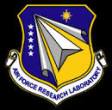AFRL releases funding opportunity for advanced cyber, SIGINT and personal communications collection and exploitation
 On September 22, the United States Air Force Research Laboratory released a broad agency announcement for Advanced Cyber, SIGINT and Personal Communications Collection and Exploitation (BAA NUMBER: BAA AFRL-RIK-2015-0022). White papers should be submitted by January 29, 2016 for consideration in FY2016.
On September 22, the United States Air Force Research Laboratory released a broad agency announcement for Advanced Cyber, SIGINT and Personal Communications Collection and Exploitation (BAA NUMBER: BAA AFRL-RIK-2015-0022). White papers should be submitted by January 29, 2016 for consideration in FY2016.
The purpose of this BAA is to provide Science and Technology (S&T) solutions to critical Air Force and Department of Defense (DoD) warfighter needs in Command, Control, Communications, Cyber, and Intelligence (C4I) capabilities with critical focus on Intelligence and Cyber. These solutions must be directly responsive to Air Force Research Laboratory (AFRL), Information Directorate strategic goals. The Information Directorate is the AFRL technical leader in Processing and Exploitation and Cyber Science technology with the mission to provide game-changing options to the warfighters that are both innovative and affordable. The breadth of the technology timeline includes both quick reaction capabilities to critical near term shortfalls to proof-of-concept for here-to-fore undemonstrated technical capabilities. To support these goals, this BAA seeks to solicit white papers for various scientific studies and experiments to further increase AFRL’s knowledge and understanding of the broad range of capabilities required to (1) research and develop advanced Cyber and SIGnals INTelligence (SIGINT) communications collection techniques, and (2) support and develop systems that perform these operations. Solutions to engineering problems using innovative approaches are sought. We are not looking for point solutions, but rather solutions which are focused on versatile multi-agency systems that rely on an open architecture with scalable technologies.
The overall technical objective of the BAA is two-fold.
The first component of the objective is to research unique and innovative techniques and algorithms that provide the identification, collection, processing, exploitation and/or manipulation of electronic communication signals in a moderate to dense co-channel environment with potentially significant Doppler effects. The Government is interested in: (1) Developing methods for the detection, identification, characterization, and geolocation of emerging communications and low radiated power level signals of interest; (2) Advancing digital signal processing software methodologies to provide new and existing systems and waveforms; (3) Developing new and innovative software and hardware architectures for standoff collection systems; (4) Developing and integrating these capabilities into information operations and collection systems; and (5) Developing the ability to characterize cognitive, software-defined radios from either airborne or ground-based platforms operating in dense signal environments.
The second component of the objective is to develop the Air Force’s capabilities in the areas of digital signal processing (DSP) and cyber operations by leveraging existing technology developed by academia and industry as well as from other organizations. The Government is interested in the research and development of technologies to maximize the information which can be extracted from the data and signals for transition and integration into to the warfighter battle management and target material plans. Automated signal processing is a key component for net-centric warfare. The scope of this component is to analyze research, develop, and demonstrate new here-to-fore un-fielded cyber-capabilities. This will include augmenting and modifying existing fielded systems, incorporating the cyber-capabilities gleaned into the tactical target materials battle planning, discovering and improving novel capabilities on commercial and personal communications platforms, developing an automated government-off-the-shelf (GOTS) signal processing framework that provides rapid signal processing and cyber operations capabilities to enable the warfighter to respond in near real-time to threats in hostile areas of operation; and research and development into novel cyber operations techniques.
Detailed focus areas are as follows:
- Detection and identification of signals of interest in dense signal environments,
2. Technologies that will enable SIGINT systems and/or platforms with an improved ability to automatically detect, identify, sort, track, prioritize, reliably classify, and geolocate target signals of interest,
3. Technology that will enable precise geolocation (weapon system accuracies) of emitters that are below the level of interference is of particular interest,
4. Interference cancellation techniques including beamforming and digital and temporal interference cancellation techniques that work on a single and/or array antennas,
5. Techniques that utilize the latest technology and emerging processor architectures as well as apply systems engineering approaches to platform integration, existing asset sharing, signal processing paths hardware constraints and reducing size, weight and power. Critical to this work is:
a. Developing signal reconstruction and signal identification techniques for emerging radio communication devices for emerging military and commercial radio communications, and
b. Developing systems for embedding in Size, Weight, and Power (SWaP)-constrained platforms,
6. Information Operations (IO) systems consisting of the integrated application of electronic warfare operations (EW Ops), network warfare operations (NW Ops) and influence operations (IFO), and
7. Cyber operations addressing three major elements: Acquisition, Access and Processing (AAP) across the many new attack surfaces brought to play by the modern personnel communications available.The innovative techniques and capabilities described in this BAA play a vital role in capturing measure of performance (MOP) and measure of effectiveness (MOE) indicators which are crucial for information operations. Information furnished from the intelligence gathering and processing technologies provides the continuous decision-quality information necessary to successfully employ air, space and information operations. Integration of these techniques into information operations systems and the timely incorporation into the battle planning process is of high interest.
Full information is available here.
Source: FedBizOpps







